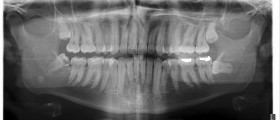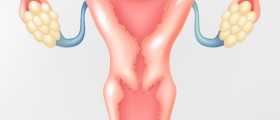
Ovarian cysts and the types
Ovarian cysts are rarely a reason for concern, because inthe majority of cases they do not pose any threat for the health of a woman. Dueto this reason, the treatment is usually not necessary. However, once they aredetected, it is recommended to monitor them from time to time, because even ifthey usually disappear on their own, sometimes they might grow in size andcause complications. As for the most commonly present ovarian cysts, follicularcysts, corpus luteum cysts, hemorrhagic, and dermoid cysts are definitely mostfrequent.
Follicular cysts develop at the time of ovulation, butusually when the ovulation does not happen due to some reason. However, theyrupture, thus disappearing on their own, and the sign of the rupture is a sharppain approximately in the period of ovulation. However, the pain might notalways be present.Corpus luteum cysts is a type of the functional cysts, butthey occur when the corpus luteum instead of breaking down and dissolving,becomes filled with either blood or fluid and continues to exist. These cystsdo not manifest through any symptoms either.Hemorrhagic cyst is also a functional cyst and it developsdue to the bleeding inside the cyst. Pain on one side of the abdomen might be oneof the indicators, although not necessarily.Dermoid cysts are more common in younger women and due tothe fact that they tend to grow more than others, they should be monitored inorder to react in time if necessary. What is interesting about them is that despitethe fact that they are benign, other tissues (hair, cartilage and even bone)can be found in them.The real causes of ovarian cysts
The fact is that functional ovarian cysts are the mostcommon, and they develop during the ovulation. What happens is that thefollicle, which is created every month in the ovaries, continues to growinstead of simply rupturing after the egg is released and turning into corpusluteum. More precisely, corpus luteum normally dissolves if there is no pregnancy,but in some cases, that simply does not happen, and ovarian cyst is created inthis way. This is the most usual way in which ovarian cysts are created, butthe fact is that there are numerous factors that can contribute or initiatetheir development as well. Some of these factors are imbalance of the hormones,particularly estrogen and progesterone, stress, lack of sleep, irregularmenstrual cycle, infertility, hypothyroidism, as well as various medicationsamong which are antibiotics and steroids.

















Your thoughts on this
Loading...